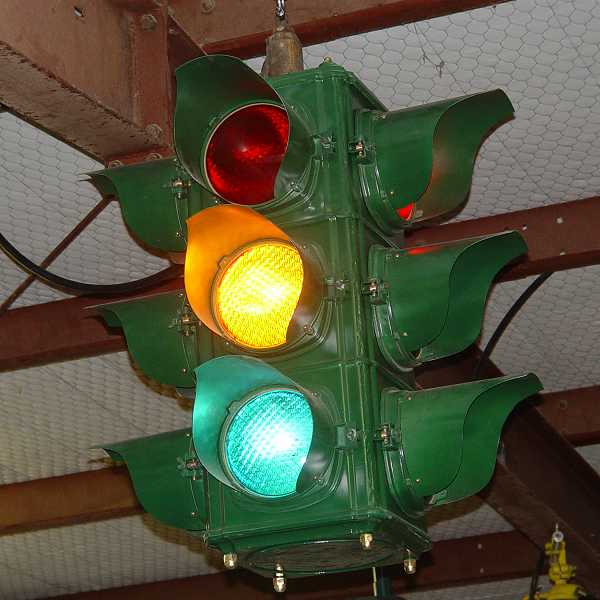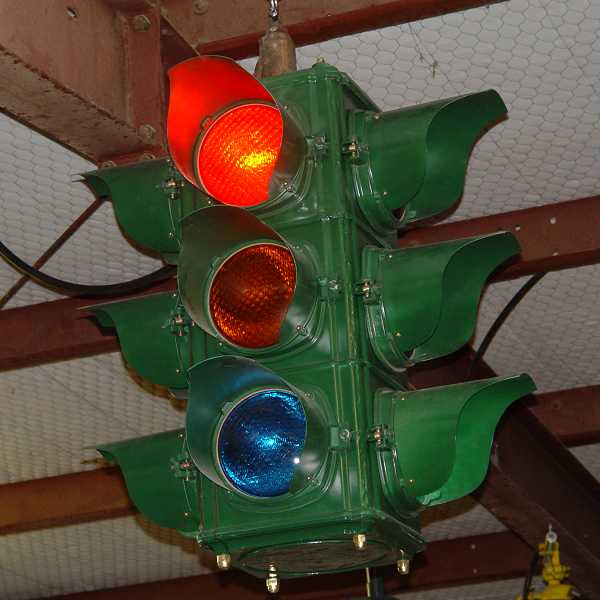Willis Lamm's
|
|
Signal Service Corporation (SSC) Type BAP-34 Fixed 4-Way Signal |
Part Three
Click on any picture to
bring up a larger image in a new window.
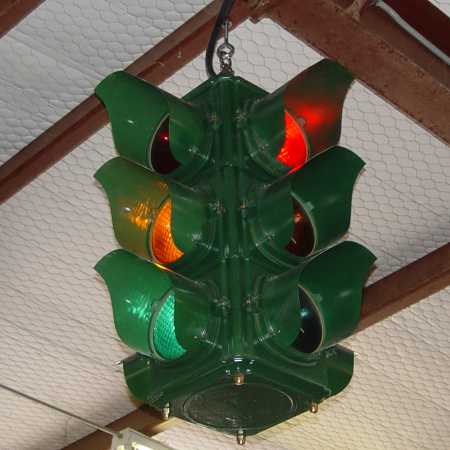
This particular signal is wired to a Camtime cam controller configured to replicate the original factory "single yellow overlap" display sequence. Yellow overlaps were common during the Great Depression as they allowed for more economical controllers and wiring. With overlaps, the green lamps facing the main street and the red lamps facing the cross street could be wired to the same circuit, as were the red lamps on the main street and green lamps on the cross street. With single yellow overlaps, the yellow lights on the same sides of the signal as the lit green lights would come on for about three seconds before the light changed. This type of sequence was also known as the "split amber" sequence. With double yellow overlaps all four yellow lights were wired to a single circuit. The signal would display yellow in all four directions - overlapping both green and red indications, before the signal changed. In calculating economics a double overlap signal only required three controller cams and contacts and three power leads and one neutral lead to be run from the control box to the signal. By comparison a non overlapped signal, as we commonly see today, required six controller cams and contacts and six power leads and one neutral lead to be run from the control box to the signal. During the Great Depression every penny counted so these cost savings, insignificant today, were important then. Several of the early signals, such as ones made by W.S. Darley & Co. and Southern Autoflow, had what we would describe today as fairly sloppy controllers. The light changes weren't precisely timed often resulting in unintended short "dark-outs" or short overlaps between red and green displays, or yellow displays that didn't go out at the same time as green displays. All the SSCs that I ever saw in service had very precise displays, similar to the switching accuracy that we are used to seeing today. View the display sequence on YouTube.
After over 70 years there are still a handful of BAP type signals still in service on city streets, although most (if not all) have been converted to energy efficient LEDs. The photos below are of a BAP design in original "factory green" (or a close color match) were taken by I.C. Ligget at the corner of Remsen and White Streets in Cohoes, NY. |
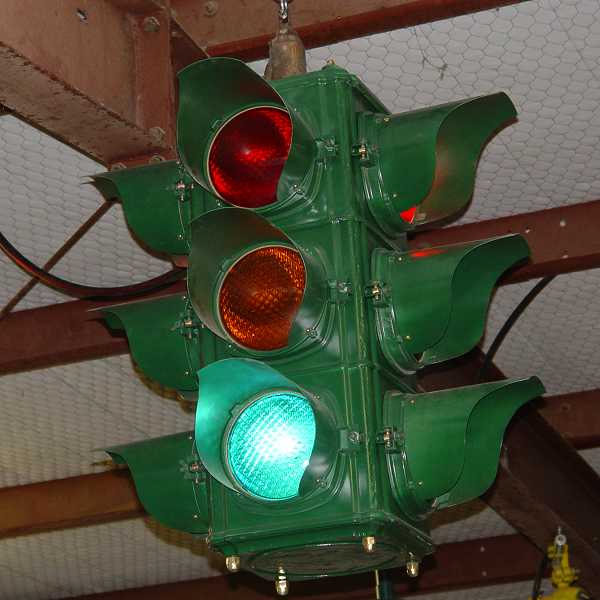
|

|
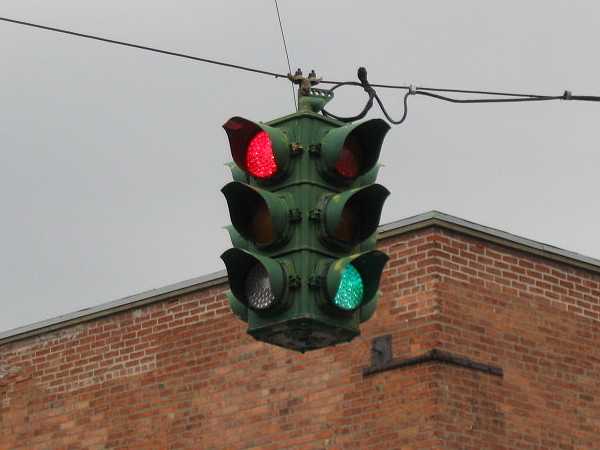
|
|
Signal Service Corporation was eventually taken over around 1945 by Marbelite. For a short period Marbelite sold BAP style SSC signals with Marbelite nameplates.
Continue to SSC BAP-13 Beacon
Return to Part TwoReturn to Signals Page |
